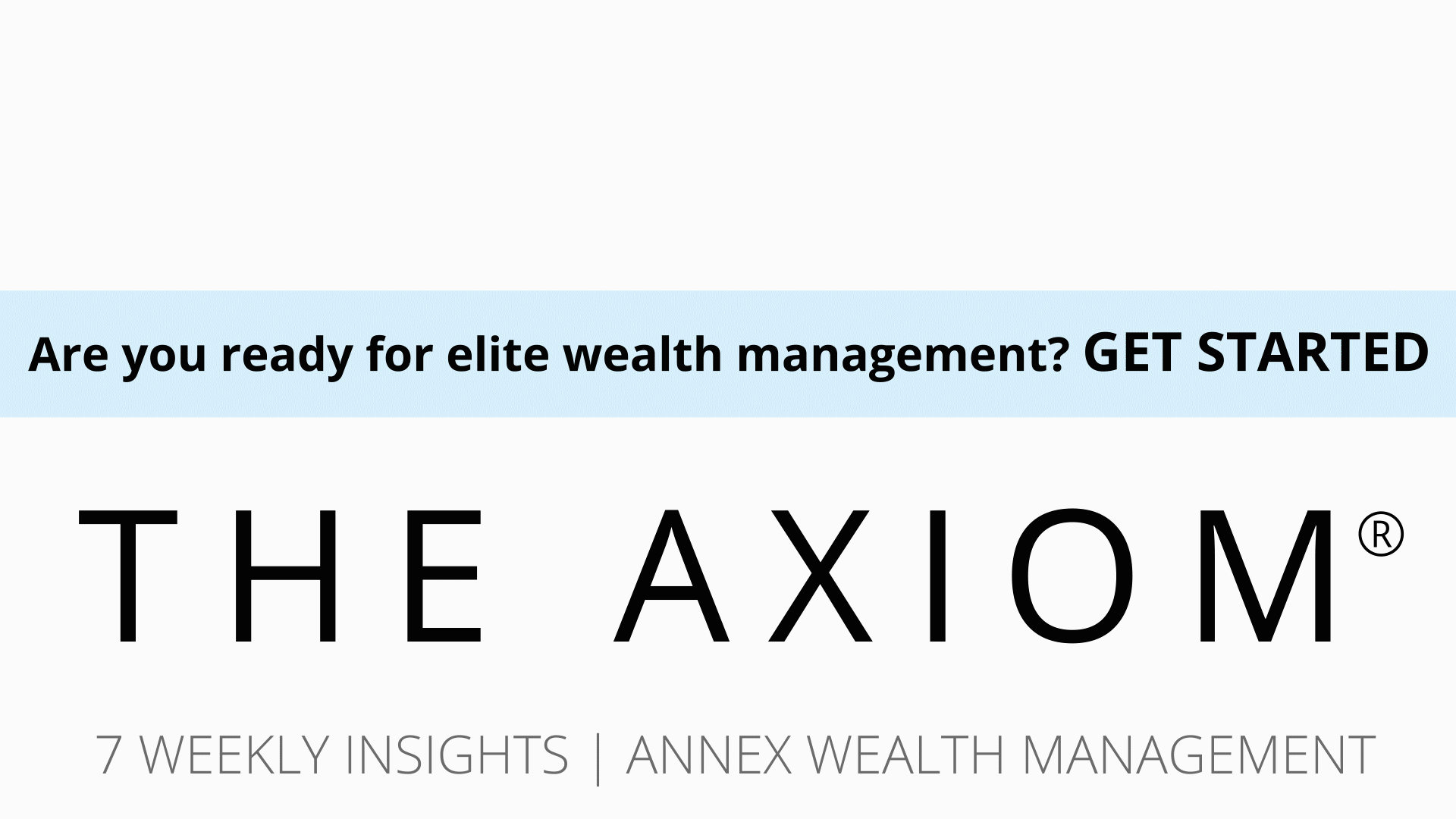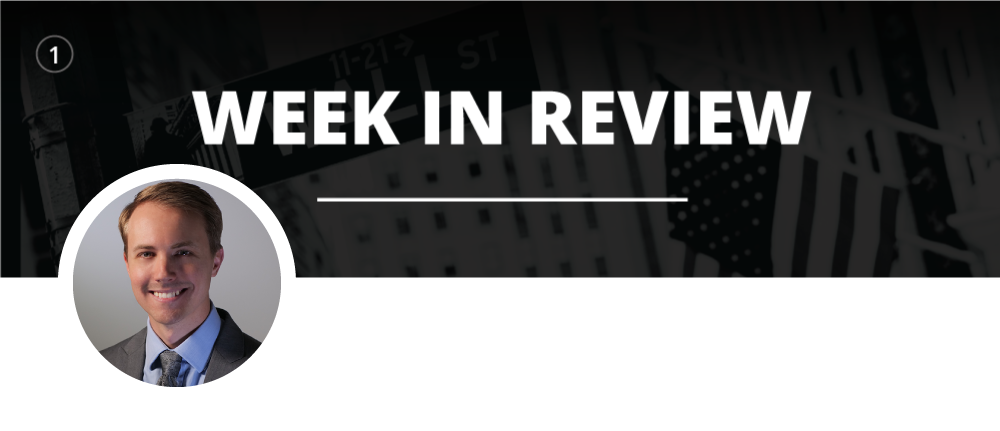
Axiom | Vol 272
What are factors that affect inflation? What are some signs I should look for to anticipate inflation? | Quadruple Witching Caps 2 Down Weeks – But Markets Show Signs Of Life

Meet The Axiom®’s Guest Editor: Blaine Disrud, CFA®
I’m Blaine Disrud, and I am a Research Analyst and Trader at Annex Wealth Management.
I also work as part of the Annex Wealth Management Investment Committee, where we review market data, analyze economic conditions, and work on investing client portfolios to match their financial goals.
My wife and I have a four-month old daughter, whom is full of smiles. We enjoy hiking the many state parks with a goal to visit one National Park a year. When not hiking, I enjoy playing golf in the spring and summer, hunting in the fall, and getting on the ice for hockey in the winter.
BACK TO TOP ↑

“I find the Axiom to be a great platform, not just for Annex clients but all who receive it. It allows everyone to see what the Annex Team has to offer.”
– Guest Editor: Blaine Disrud, CFA®
Trader/Research Analyst
________________________________________
Quadruple Witching Caps 2 Down Weeks – But Markets Show Signs Of Life
What’s Quadruple Witching? And why is the upcoming FOMC report so impactful to the direction of the markets? Annex Wealth Management’s Dave Spano and Derek Felske discuss.
BACK TO TOP ↑

Poll: What Kind Of Football Fan Are You?
Football season is here, and luckily there are lots of ways to consume it. Are you a diehard NFL fan, fanatic college football buff, member of the high school football cheering section, or Madden addict?
BACK TO TOP ↑

Consider A Health Savings Account
You’ve heard the immortal words of Benjamin Franklin: “In this world, nothing can be said to be certain, except death and taxes.” At Annex Wealth Management, we understand Franklin’s point – however, we’d contend healthcare expenses in retirement are just as certain.
When preparing for retirement, it’s important to plan for healthcare expenses. There are tools available to help make saving for healthcare more efficient. Take the Health Savings Account (HSA), a special type of account available only when you have a high-deductible health insurance plan that is HSA-compatible. You may think that HSAs are only for younger people, but folks of all ages have discovered the benefits of this tool.
This week’s MoneyDo task: Evaluate the health insurance plans available to you and consider switching to an HSA-compatible health insurance plan.
Consider The Advantages
HSAs are very powerful savings tools. It is often said that they are “triple tax advantaged.” In fact, they are the only such account to have this unique combination of tax benefits. Here are the three levels of tax advantage:
- Contributions are pre-tax, so the contribution is deductible on the current year tax return
- Contributions grow tax-free
- Withdrawals are tax-free, if used for HSA-approved medical expenses
The benefits of Health Savings Accounts extend beyond their “triple tax advantage.” The tax code doesn’t require earned income, nor does it impose income limits to contribute, like other tax advantaged savings accounts. Essentially, everyone with a qualified health insurance plan can contribute.
HSAs do have annual contribution limits. For 2021, an individual can contribute up to $3,600, while a family can contribute $7,200. For those over the age of 55, an additional $1,000 “catch up” contribution is allowed.
Review Compliant Plans
As you begin evaluating your health insurance plans, you might be wondering what criteria are used to determine if an option is HSA-compliant. Here are the rules for 2021:
- The deductible must be at least $1,400 for an individual or $2,800 for a family
- Yearly out-of-pocket maximum expenses can’t exceed $7,000 for an individual or $14,000 for a family
- Generally, a health plan (including a Marketplace plan) that only covers preventive services before the deductible.
Keep in mind – Medicare is NOT an HSA-compatible plan, and special rules apply to the year in which you transition to Medicare. If you have questions on HSAs and Medicare, we’d be happy to help.
Evaluate Expenses
As you evaluate, consider what expenses you’ll encounter, and if those expenses would be approved HSA expenses. Generally, if the expense is considered deductible on your current year return, then it is also an approved medical expense for HSA purposes. Some examples are listed below, and more information can be found in the IRS publication 502. (https://www.irs.gov/pub/irs-pdf/p502.pdf )
For 2021:
- Covid-19 Testing and treatment
- Eye exams, glasses, contacts, and eye surgery
- Chiropractor
- Dental work
- Doctor visits
- Fertility procedures
- Hospital services
- Insulin and supplies
- Mental health
- Medicare Part A, B, C, or D premiums
- Nursing home
- Over-the-counter medications and supplies
- Prescription medication
- Physical therapy
HSA Tips
HSAs Work Best When You Let Them Grow
As you plan and evaluate, keep in mind that an HSA is a very powerful savings tool and tax-free growth is one of the reasons they’re so attractive. Growth takes time. A common approach in planning around an HSA occurs when people contribute and then take withdrawals to pay for the current year’s medical expenses (treating the HSA like a flexible spending account). This method isn’t optimal because the account doesn’t have the opportunity to grow.
Instead, consider paying for medical expenses from a non-HSA account, leaving the HSA to grow tax-free until retirement. If you follow this strategy, check with your administrator to see if the HSA funds can be invested for long-term growth, rather than sitting in a cash-type account.
Review Non-Medical Withdrawal Requirements
Even if your HSA grows beyond your healthcare liabilities in retirement, you can always withdraw for non-medical related expenses upon attainment of age 65. The caveat is that you’d have to pay income tax on the withdrawal. Non-healthcare withdrawals after the age of 65 would be treated similarly to IRA distributions.
Consider How Your Estate Should Deal with Your HSA
While it is a good course to allow your HSA to grow until retirement, it isn’t a good idea to leave this type of account to your heirs. A spouse will be able to continue the tax advantages associated with the HSA that you enjoyed during your lifetime. However, a non-spouse individual is unable to “rollover” the funds and will be required to immediately recognize the ordinary income. Unlike IRA distributions, there is no 10-year distribution rule.
Let us Know if You Need Help
This week’s MoneyDo is longer than most – but that’s because there’s so much to learn about this powerful financial planning tool. Our planning team at Annex Wealth Management incorporates HSAs into financial plans whenever possible. As you evaluate your situation to see if an HSA is right for you, make sure to bring questions to an advisor you can trust.
BACK TO TOP ↑

This week’s Ask Annex comes from Mary, who asks:
“What are factors that affect inflation? And what are some signs I should look for to anticipate inflation?”
___________________________
We asked Annex Wealth Management’s Todd Voit, PhD:
- Demand-side factors, including retail prices and commensurate.
- Supply-side factors, such as commodity prices, wages and other input costs.
- Money supply growth – money supplied to the economy and banking system through the Federal Reserve’s Open Market actions.
Todd Voit, PhD
Chief Investment Strategist
BACK TO TOP ↑

Carol: “I invest differently than Roger does. I’m aggressive.”
Roger: “I’m conservative.”
Carol: “But here, they work it all out. It’s working out perfectly for both of us.”
WATCH OTHER TESTIMONIALS →
BACK TO TOP ↑


KNOW THE DIFFERENCE MINUTE:
Is The Housing Market Frenzy Easing?
KNOW THE DIFFERENCE MINUTE:
Record Import Log Jam Off Long Beach Coast
ANNEX RADIO
5 Steps Employers Can Take To Improve Their Health Insurance Offering
BACK TO TOP ↑

Annex Wealth Management provides free workshops, open to the public, on key wealth management topics.
Each week, we provide links to register for upcoming events.
BACK TO TOP ↑